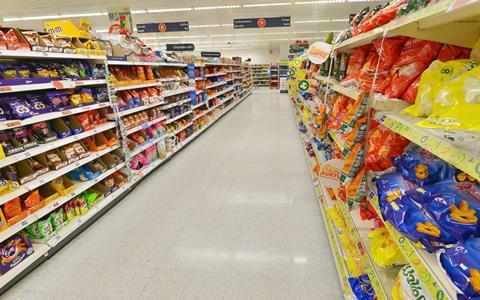
In this edition of our ‘In Conversation With…’ feature, BOPET Films Europe’s chairman, Steven Davies, discusses the problems with circularity in household flexible packaging, the role that PET currently plays in these applications, and the future of these trends.
You’re of the belief that household flexible packaging has a problem when it comes to circularity. To start us off, could you give us a broad outline of this?
The first point to make is how resource-efficient flexible packaging structures are and we shouldn’t lose sight of the positive role flexible packaging plays throughout its product life cycle, but unfortunately it is true that there are still challenges to address with circularity at the end of life.
The resource efficiency of household flexible packaging relies on a complex mix of materials, inks and adhesives, and when added to the fact that the pack sizes are small and can have a high level of food residue it essentially rules out mechanical recycling as a viable, economic end of life strategy regardless of the mix of plastics used.
Broadly speaking, what would the impact be of designing PET out of household flexible packaging structures?”
I think it is important to assess product sustainability throughout the lifecycle of a product taking into account the impact of production, the performance in use and then the potential end-of-life outcomes.
PET is currently the backbone of about 25% of all household flexible packaging structures, and replacing this with a polyolefin alternative will lead to a significant increase in the use of plastic to get the same level of pack performance. If you consider a property like pack stiffness, you require up to a 60% increase in thickness to get the same performance from a PE film compared to PET.
Another very important factor is that if you design out PET, you lose the ability to incorporate recycled content into food contact applications which of course is the opposite of one of key four pledges in the European plastics pact.
During the processing and packing process there will also be significant financial and environmental costs with less efficient processing and packing with packing lines running at lower speeds and lower temperatures, and ultimately that will lead to more machines and more factories needed to pack the same output.
If those compromises lead to a much-improved end-of-life outcome then it could be worth considering, but unfortunately the end-of-life outcome for mixed plastic or mono polyolefin remains the same with incineration or in the future pyrolysis the only viable option at industry scale.
On that subject, what do you think has driven these trends?
I think there has been a real desire from many parts of the supply chain to find a positive solution, and unfortunately, that has led to a simplistic view that the success story of mechanically recycling pre-consumer polyethylene film waste can be translated into the far more complicated world of household flexible packaging.
It is your view that PET structures can offer a closed-loop system for household flexible packaging. Can you break this concept down for us?
There is not going to be a one size fits all solution for an industry as complex as household flexible packaging, but PET structures technically can be a more resource-efficient, lower-carbon alternative in a wide variety of applications. However, it is at the end of life where the real gains can be achieved with monomer recycling which is a lower cost, lower carbon form of advanced recycling offering the only real opportunity for a closed-loop recycling process for household flexible packaging.
With other forms of advanced recycling, the plastic-to-plastic yield is very low, but because of PET’s molecular construction there is the option with monomer recycling to recover almost all of the PET present in the original structure.
Like all other areas of recycling there is investment needed, but we can only expect investment in the collection, sorting and recycling of household flexible packaging when there is a viable economic case, and here I believe PET structures and monomer recycling offers the most compelling case, and certainly the only viable way to achieve a circular economy for household flexible packaging.
What are your thoughts on the end-of-life outcomes for current mixed plastic structures, and all polyolefin structures for that matter?
As I touched on before, it is not just the plastic content you need to consider, but also the other elements in household flexible packaging as well as the limitations of the recycling processes you are evaluating. In the case of mechanical recycling the issue with household flexible packaging is the inks, adhesives and food residue which reduces the quality of the resulting recyclate, making it financially unattractive to invest to serve the limited end markets for downcycled material.
At industry scale I believe the only viable end-of-life outcomes for polyolefin-rich structures (whether they are mono polyolefin or mixed plastic with low levels of PET content) are incineration or advanced recycling such as pyrolysis.
I believe that pyrolysis will have an important role to play in the future, and we have data to prove that low levels of PET have little or no negative impact on the yield of useful products through pyrolysis so there is no need to make the compromises of re-designing all polyolefin structures.
I think the debate in the industry has to shift to a more detailed discussion about the impact of packaging structures across their lifetime, and we need to focus more on what recycling technologies are viable for those structures. This is most likely to be pyrolysis for mono PE, mono PP and mixed plastic structures, and monomer recycling where all PET structures can be used.











No comments yet